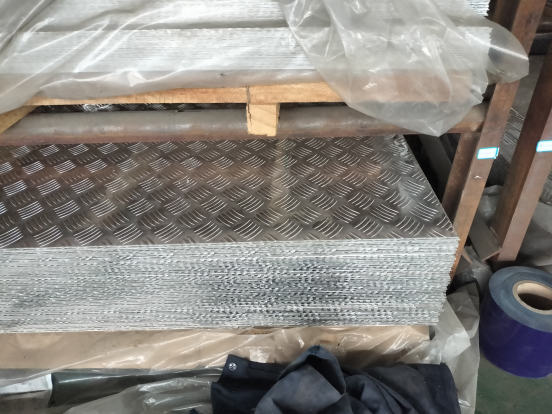Understanding Aluminum Patterned Plates and Their Anti-Slip Properties
Aluminum patterned plates, including water ripple aluminum patterned plates, are engineered to provide enhanced safety through their anti-slip features. The anti-slip principle of these plates is primarily based on the surface texture created by various patterns, which increases friction and reduces the risk of slipping. The anti-slip levels of aluminum patterned plates are classified into different categories, ranging from light to heavy-duty, depending on the depth and design of the pattern. These plates are suitable for various scenarios, including industrial flooring, stair treads, and outdoor walkways, where safety is paramount.
Corrosion Resistance of Aluminum Alloys
When selecting aluminum plates, understanding the corrosion resistance of different aluminum alloy grades is crucial. Alloys such as 3003, 5052, and 6061 exhibit varying levels of resistance to corrosion, influenced by their chemical composition. For instance, 3003 is known for its excellent workability and moderate corrosion resistance, making it suitable for general applications. In contrast, 5052 offers superior corrosion resistance, particularly in marine environments, while 6061 is favored for its strength and versatility in structural applications. Users must consider the specific environmental conditions, such as exposure to saltwater or chemicals, to select the most appropriate alloy grade.
Controlling Flatness and Thickness Tolerance
Achieving precise flatness and thickness tolerance in aluminum patterned plates is essential for ensuring their performance and aesthetic appeal. Manufacturers employ advanced techniques, such as precision machining and quality control measures, to maintain the integrity of raised or recessed patterns. By adhering to strict industry standards, companies like Jindalai Steel Group Co., Ltd. can deliver products that meet the exact specifications required for various applications. This attention to detail not only enhances the functionality of the plates but also contributes to their visual appeal in architectural designs.
Function and Decoration in Aluminum Patterned Panels
Aluminum patterned panels serve a dual purpose, combining functionality with decorative elements in applications such as curtain walls, ceilings, and stair treads. The unique patterns available in aluminum composite plates and aluminum PVC panels allow for creative design possibilities while maintaining structural integrity. These panels can be customized to fit specific aesthetic requirements, making them ideal for modern architectural projects. The versatility of aluminum patterned plates ensures that they can be seamlessly integrated into both commercial and residential settings, enhancing the overall design while providing essential safety features.
Selecting the Right Alloy Grades and Tempers
When choosing aluminum patterned plates, users must consider various factors, including load requirements, corrosive environments, and aesthetic preferences. Selecting the appropriate alloy grade and temper—such as O-temper for maximum ductility or H-temper for increased strength—can significantly impact the performance of the final product. Additionally, the choice of pattern type should align with the intended use, ensuring that the plates not only meet functional needs but also complement the overall design vision. By carefully evaluating these criteria, users can make informed decisions that enhance both the safety and beauty of their projects.
In conclusion, aluminum patterned plates offer a unique blend of safety, durability, and aesthetic appeal. By understanding their properties and selecting the right materials, users can effectively utilize these versatile products in a wide range of applications. Jindalai Steel Group Co., Ltd. is committed to providing high-quality aluminum solutions that meet the diverse needs of our customers.
Post time: Nov-20-2025









